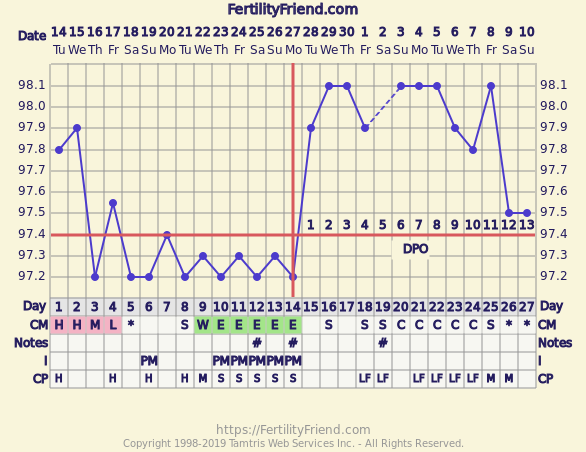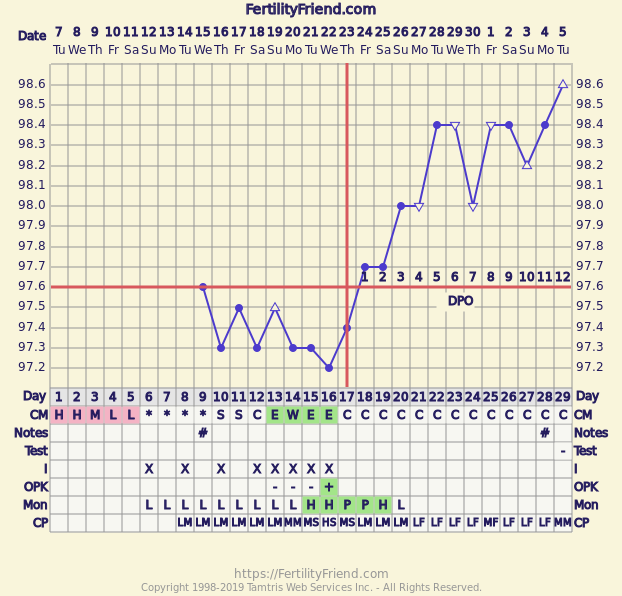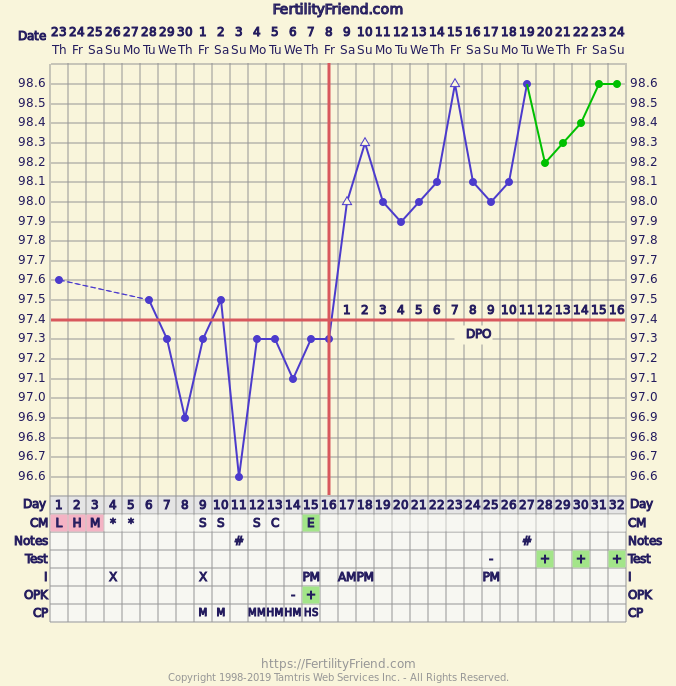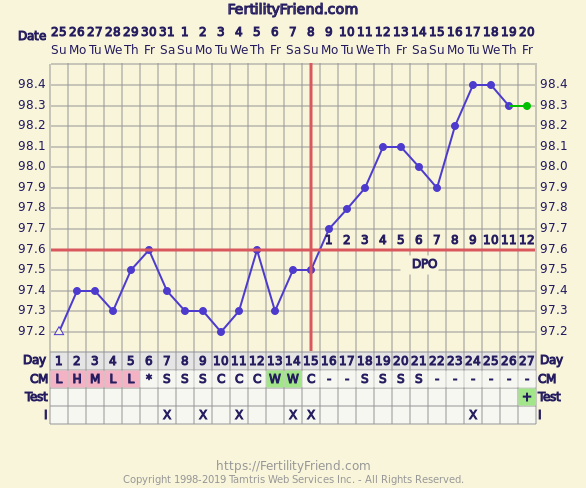Chart Patterns - Ideal Charting Pattern
Lesson 14
Lesson Objectives:
-
Be able to recognize an ovulation pattern on a fertility chart.
-
Understand the characteristics of a regular (ideal) ovulation pattern.
Major Points in this Lesson:
-
A regular/ideal chart pattern shows a clear thermal shift the day after ovulation.
-
A regular/ideal chart pattern shows a patch of fertile (egg white or watery) cervical fluid just before ovulation.
-
An ideal chart pattern shows well-correlated signs.
-
There are a variety of "ideal" fertility chart patterns.
Regular (Ideal) Pattern
In an ideal charting world, ovulation patterns would universally be clearly indicated by all possible fertility signs and they would come in the order expected and indicate ovulation for the same day. While this chart pattern does not always prevail, it is the most common. We call this the "Regular" or "Ideal" ovulation pattern. If this is not the case for you, this is usually not a reason for too much concern as the ideal is not necessarily the rule when it comes to fertility charting. There are many other "normal" charting patterns.
The regular ovulation pattern has the following characteristics:
-
cervical fluid becomes increasingly wet as ovulation draws nearer
-
cervical fluid dries up quickly soon before or soon after the temperature rise
-
a single patch of egg white cervical fluid is observed in the days just before ovulation
-
a biphasic temperature shift, showing a marked increase in temperatures after ovulation
-
temperature rises in a single abrupt shift that is sustained throughout the luteal phase
-
cervix is high and soft and open just before the temperature rise
-
Ovulation Predictor Kit (OPK) is positive 12-36 hours before the rise
-
OPK is only positive in the one or two days before ovulation
-
Microscope shows full ferning immediately prior to ovulation
-
Fertility Monitor shows a High reading in the days leading up to ovulation and a Peak reading the day before the rise
When all signs indicate increased fertility for the same days prior to ovulation, and the ovulation date is clear, the detection of ovulation and the chart analysis can be quite certain. The analysis and interpretation is more reliable when several signs can be correlated and cross-checked. It is, however, quite possible to detect ovulation and increased fertility under less than ideal charting circumstances. The more signs that "match" the more reliable the interpretation will be. When signs do not match and the ovulation date is not certain due to this, FertilityFriend.com will indicate the most likely date with a dashed red line instead of the solid red line. This is meant to alert you that the ovulation date is not certain so that you will keep on the look-out for signs of increased fertility and not miss a potential chance to conceive.
The following charts show some variations of the ideal pattern and illustrate just how unique our cycles are- even when the pattern is clear!
The chart below shows several days of fertile cervical fluid and a soft cervix in the days preceding ovulation. Ovulation is confirmed by a dramatic thermal shift on cycle day 14. Temperatures stay in the higher range until the end of the luteal phase. Temperatures begin to drop and spotting is experienced before menses begins. The most fertile days are cycle days 10 through 14. Intercourse is well-timed throughout the fertile time, though there is no pregnancy this cycle.

On the chart below, ovulation is detected on cycle day 17 and is preceded by several days of fertile cervical fluid, a positive OPK result and a high, soft cervix.

On the next chart, ovulation is clearly detected on cycle day 16 by a clear and sustained thermal shift. Egg white cervical fluid, a high, soft cervix and a positive OPK are observed the day before ovulation. Intercourse on the day before ovulation results in pregnancy this cycle. A home pregnancy test is positive at 12 days past ovulation. An earlier pregnancy test (at 9 days past ovulation) was taken too early to show a positive result.

On the next chart below, you can see ovulation is detected by a thermal shift on cycle day 15 following two days of fertile cervical fluid. Intercourse is well-timed the two days preceding ovulation. A pregnancy test shows positive results here at 12 days past ovulation.

Next Lesson: Chart Variations.
Note: Please check this lesson within the app to access the lesson quiz.

